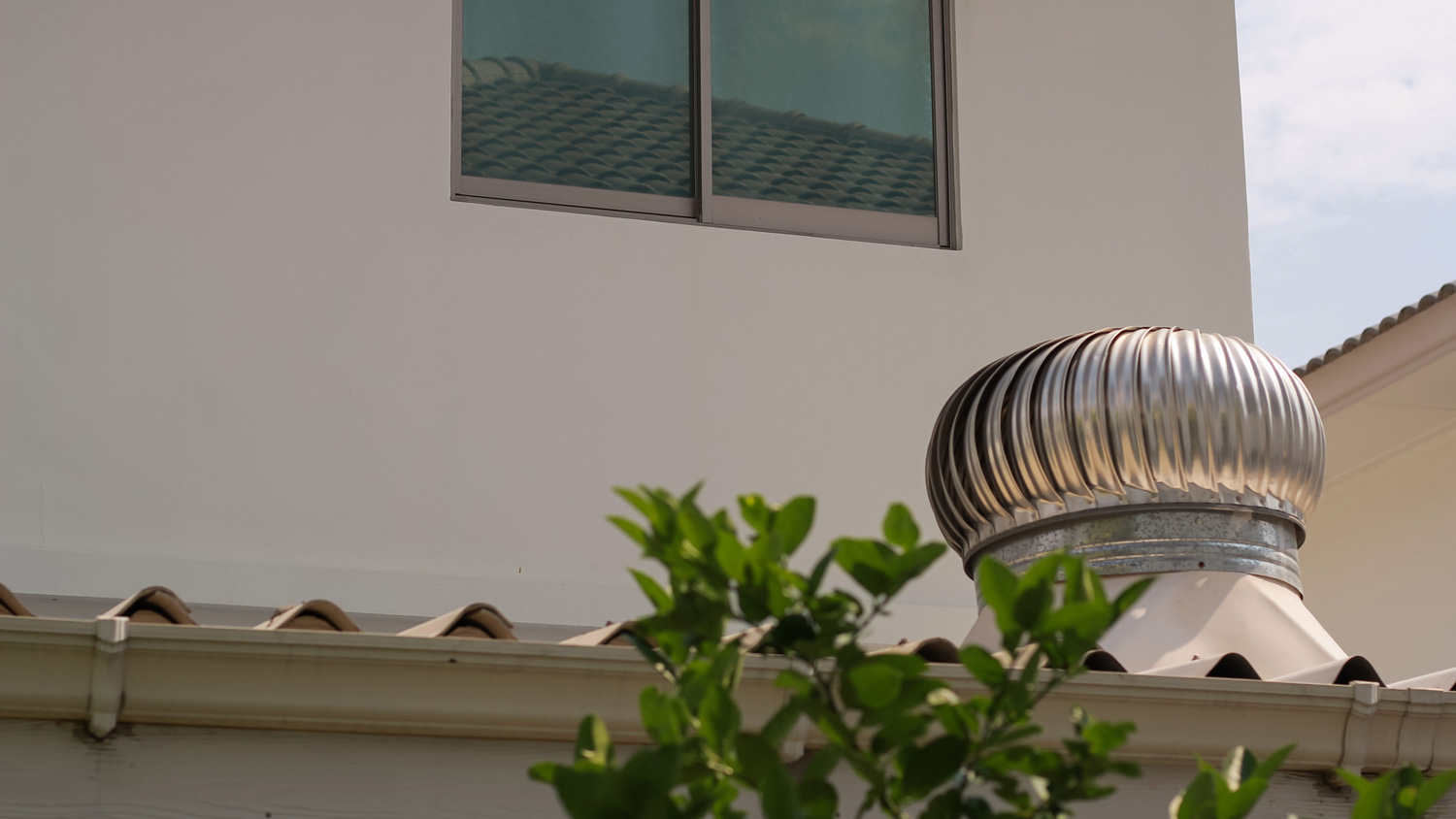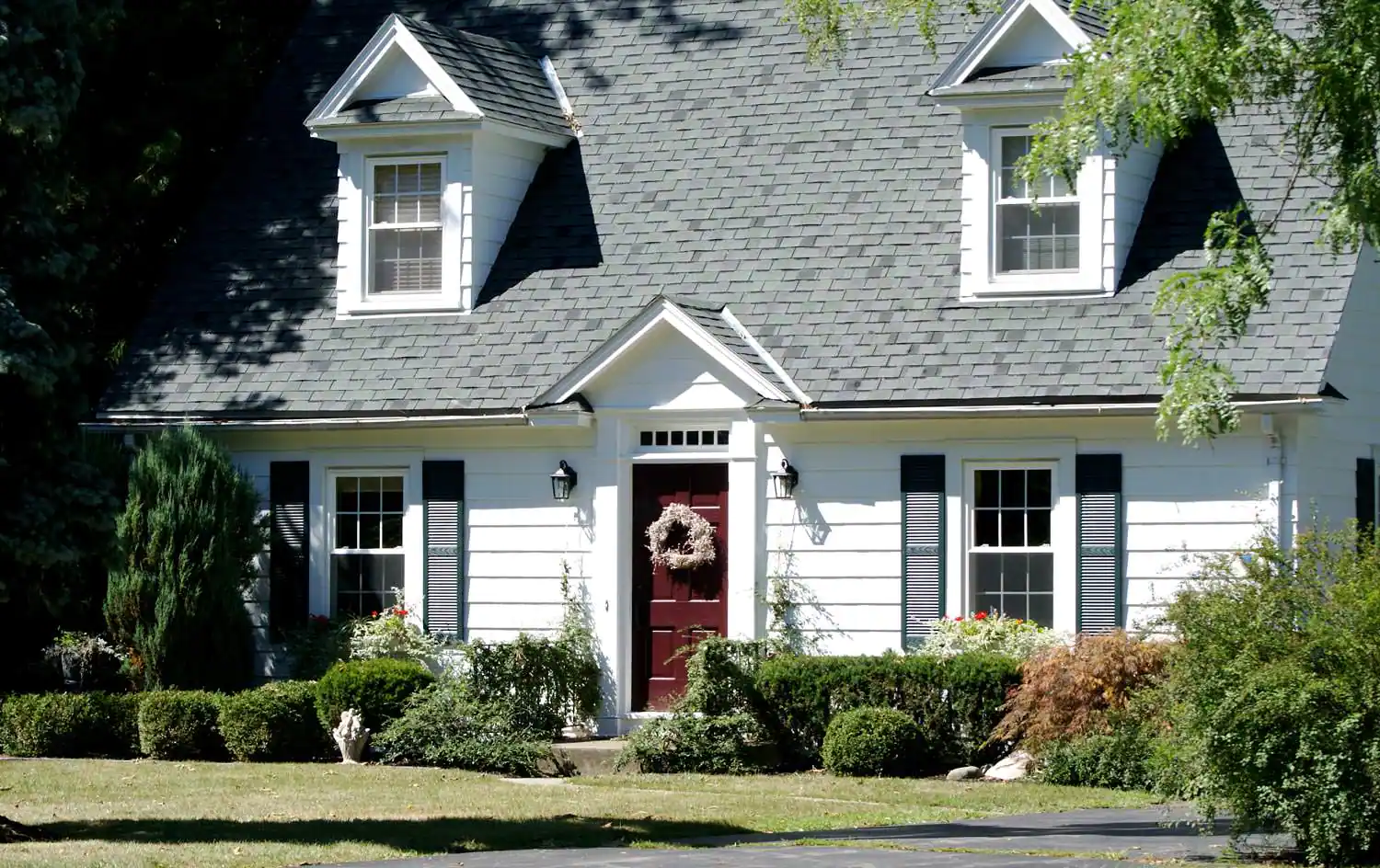Your Guide to the Best Types of Roof Vents to Keep Your Home Dry
There’s no need to get vent out of shape


The two main types of roof vents are intake vents and exhaust vents.
Intake vents draw in cool air, and exhaust vents banish hot air.
Factors like roof incline and size will impact your choice.
Some roof vents can hide under your shingles.
Bathroom exhaust vents prevent moisture and mildew.
Common roof vent myths make it tough for anyone who isn't a roofing or HVAC pro to make sense of your ventilation options. It’s crucial to have enough intake and exhaust vents for your attic space—the proper amount of ventilation is based on square footage.
With the right knowledge, you can make the best decision for your home’s ventilation. Here's a look at the best types of roof vents to curb moisture in your home.
Intake Vents
Intake vents work by allowing cool air to come into the attic to push out hot, humid air. You have several different styles to choose from for your home.
Soffit Vents
Soffit vents are located under the eaves (in the soffit) of your roof and are one of the most common types of intake ventilation. They come in plastic, vinyl, and aluminum, and keep your attic fresh by drawing outside air into the attic. Meanwhile, hot air trapped in your attic is sent out through the exhaust, also known as an outtake vent.
Drip-Edge Vents
If you don't have available soffits, a drip-edge ventilation style could be the ticket. These vents attach to the overhang of your shingles at the roof's edge. They distribute air into your attic in a way that's similar to soffit vents.
Over-Fascia Vents
Known for creating even air distribution, over-fascia vents are placed below the drip edge of the shingles on your fascia board. An appealing aspect of this option is that the vents are covered by roofing paper and shingles, so you can’t see them.
Exhaust Vents—aka Outtake Vents

Exhaust vents stop heat buildup by allowing hot air to escape your attic. They are typically considered necessary for homes in all climates, though they’re especially important in cold climates.
Roof Ridge Vents
The benefits of ridge vents include ventilation and price, since the cost to install a roof ridge vent is typically less than other types. One of its perks is that it’s a static form of ventilation, which means it doesn’t have moving parts that could develop mechanical issues.
These ventilation systems are installed across a roof's ridge. Vents are then covered by shingle caps to create an attractive finishing touch.
If you have a steep pitch on your roof, a roof ridge vent is an option that most venting experts will recommend for your home. There's one important thing to know before attempting a DIY roof ridge vent installation. Roof ridge vents typically require baffles in order to work effectively.
Box Roof Vents
The box vent is an inexpensive design that allows air to exit the attic. While they are effective at helping with airflow, the fact that passive, static box vents rely on natural air and wind to work makes them less effective than options that actively draw air in.
Box vents are commonly recommended for low-pitched roofs. Larger roofs typically require several box vents. While the boxes are visible, they can be matched to your roof color for the smallest visual footprint possible.
Turbine or Roof Fans
Turbines feature curved vanes that actually catch the wind for their power source. The spinning turbine then pulls hot, humid air from your attic.
While this is an efficient option, it relies on wind speeds of at least 5 mph to work. When comparing ridge vents and turbines, many people consider the visibility of turbines to be a significant downside. Another drawback is that turbines are vulnerable to damage from falling limbs, wind, and rodents. Some are also prone to rusting, and may let off a creaking sound as they age.
Solar Fans
Solar fans create active ventilation by drawing air into your attic. While they are more expensive than a static option like a box vent, solar fans are also common for lower pitched roofs.
Solar fans will work around the year, but make sure you’ll get enough sunlight to activate it. They are preferred over wind fans by some people because they are much quieter. They are also slightly better at creating airflow than wind fans. Be sure to check the fan to see how many square feet it covers. You may need multiple fans to properly ventilate your space.
“If you are using box vents or wind turbines, it may take a large number of them to properly ventilate the roof,” says Ami Feller, owner of Roofer Chicks in New Braunfels, TX. “This can be an eyesore and also, every hole cut in a roof is a potential leak point. Because of this, we try to only use ridge vents and power or solar vents.”
Electric Power Vents
An advantage of electric power vents is that they typically have more cubic feet per minute (CFM) of airflow draw than solar vents, so you need less vents to handle the same attic space. They also typically cost less. Electric power vents do pull power, but they use a relatively low amount of electricity.
“I recommend always putting them on a switch so that you can turn it off if you ever want to,” says Feller. “Both solar and electric power vents have thermostats on them—when the attic reaches that temperature, the fans start to work. We typically set our units at 100 degrees Fahrenheit.
Bathroom Exhaust Fans
While most people don't think of their bathroom exhaust fans as ventilation fans, the truth is that they are essential for decreasing moisture levels in your home.
A bathroom is often a high-moisture area. Unfortunately, many people assume that bathroom exhaust fans don't require the same expert installation as roof vents. As a result, there are many poorly installed bathroom exhaust fans out there that are dumping bathroom moisture into attics.
A high-quality, efficient bathroom exhaust fan creates an important defense against condensation that forms on the underside of your roof deck. In fact, many roof mildew problems originate with bathroom exhaust fans. Bathroom exhaust fans should always be vented through rooflines or sidewalls using exhaust hoses.





- Roofers
- Metal Roofing
- Roof Repair
- Roof Inspection
- Vinyl Siding Repair Contractors
- Flat Roofing Companies
- Commercial Roofing
- Emergency Roofing Companies
- Leaky Roof Repair
- Metal Roof Repair
- Business Roof Repair
- Flat Roof Repair
- Tile Roof Repair
- Slate Roofers
- Rubber Roofers
- Roofing & Siding
- Metal Roof Installation
- Affordable Roofing
- Roof Sealing
- Attic Ventilation Contractors
- 11 Common Myths About Attic Ventilation
- How Soffit Vents Work to Keep Your Home Dry
- How Much Ventilation Does Your Attic Need?
- Ridge Vents vs. Turbines for Attic Ventilation
- Ridge Vents and Gable Vents: Can You Combine Them?
- What Is a Ridge Vent on a Roof? And What Does It Do?
- Who Installs Roof Vents on Homes? Here’s Who to Call
- How to Check Your Attic Ventilation With a Smoke Test
- How Many Soffit Vents Do I Need for My Attic?
- Gable Vents vs. Ridge Vents: Pros, Cons, and Costs











